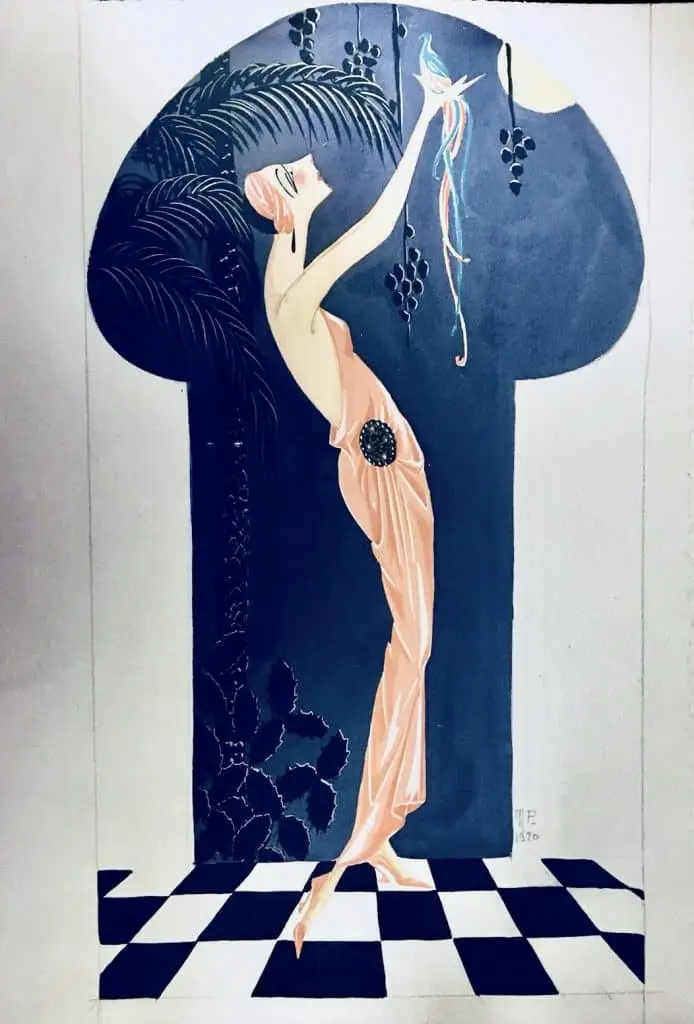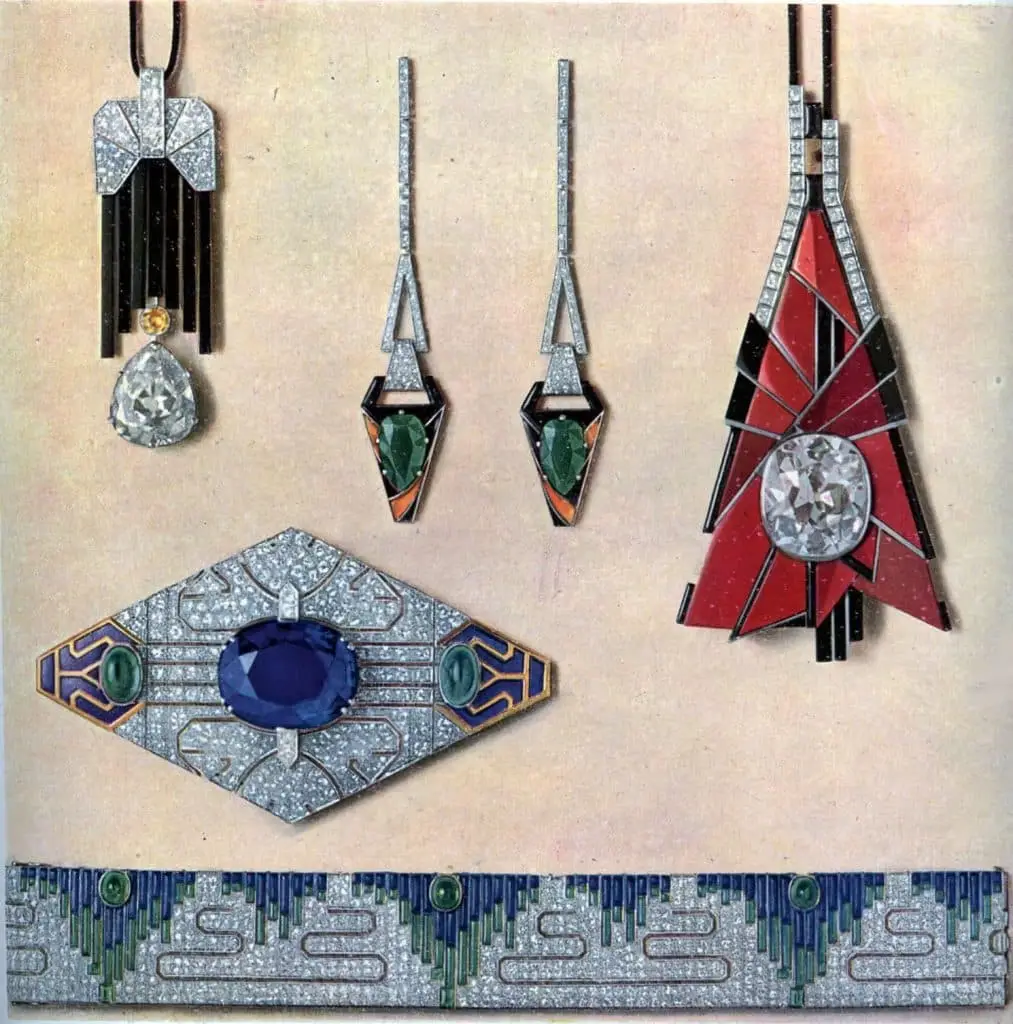
Jewellery History
Art Deco jewellery era
The term “Art Deco” was coined by art historian Bevis Hillier in 1960 for the movement known as Style Moderne. The Style above was heavily influenced from other Modernism movements and was established as a distinct style by members of the French artist who was collectively known as La Société des artistes décorateurs, at the 1925 Exposition Internationale des Arts Décoratifs et Industriels held in Paris.
Art Deco, even from French origin, was almost entirely an American phenomenon, fueled by the decadence of “The Roaring Twenties.” This movement affected the decorative arts and jewellery designs most profoundly. The style characteristics are the predominantly use of clean lines, trapezoidal shapes, stepped edges, and arched corners. Unlike the graceful lines of Art Nouveau, Art Deco emphasized linearity and geometric form.
Jewellery from this era was characterized by the symmetrical arrangements and repeated patterns like the pyramids and ziggurats. The movement was mostly influenced by primitive motifs from ancient culture, such as Aztec and Egyptian, as well as traditional topics from tribal Africa. The move combined the Style and sensitivity of art and design itself with the relentless proliferation of mass-production. Gemstones were also used to make the statement pieces by cutting them in geometric shapes.
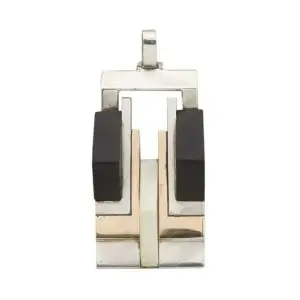
The platinum and diamond jewellery of Edwardian time was much similar to the White jewellery”: platinum, silver, and white gold were used for their white appearance and set with diamonds. This technique that debuted at the 1929 Exhibition at the Palais Galliera in Paris became hugely popular throughout the 1930s. Jewellery pieces changed in form and function like the dramatic change in female clothing and hairstyles. The lavish matching sets and tiaras of Victorian times were out of fashion.
Women wore long pendants, valiant cocktail rings, multiple bangle bracelets, richly decorated accessories such as cigarette cases, and the double-clip jewellery which could be worn together or taken apart and worn on lapels or belts.
Retro jewellery (1935 – 1950)
The Retro period took place during World War II, and, as a reaction to the terrible conflict, jewellery became bolder, brighter, and lighter-hearted. Unlike the Art Deco style, the Retro style has soft and feminine motifs. As platinum became essential to the war effort and scarcely available for commercial use, the use of gold regained popularity. Different colors of gold, such as yellow, rose gold, and green, were used in combinations.
The most popular gemstones used in this period included aquamarines, topaz, and citrines, as well as synthetic rubies and sapphires, in massive rectangular cuts used in cocktail rings, large bracelets, and watches.
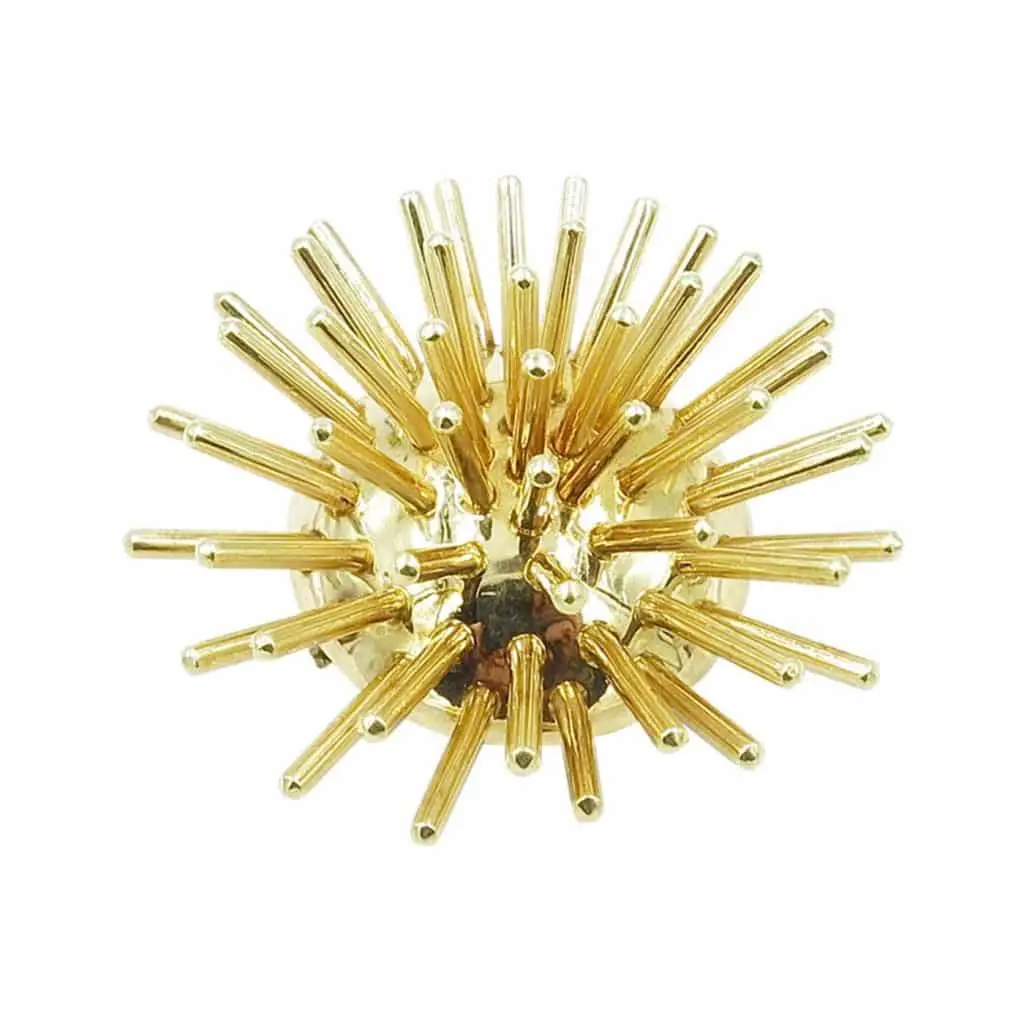
The patriotic theme was also popular, diamonds, sapphires, and rubies were often paired together, and three-dimensional sculptural ribbons and folds made out of metal were used everyday. Hollywood fashion and influence had a significant impact on the designs of the period; actors and actresses influenced the Style and trends of the time as European royalty had previously. Designs from earlier periods, such as flowers, bows, and sunbursts, were reworked to reflect the more prominent and bolder design sensibilities.
Mid-Century period (the 1940s-1960s)
Modernism was the primary influence of this period. After the war, Retro and Victorian designs continued to influence jewellery trends; during the 1950s, the plans began to shift radically as materials and artisans were again available. Customers sought fresh, new styles to distance themselves from the troubled past and are in this period that artists such as Picasso, Braque, and Dali designed precious jewellery. Throughout the 1950s, abstract designs were standard. Starbursts and “atomic” models, such as the Cartier “Sputnik,” reflected a fascination with the new frontiers in space exploration.
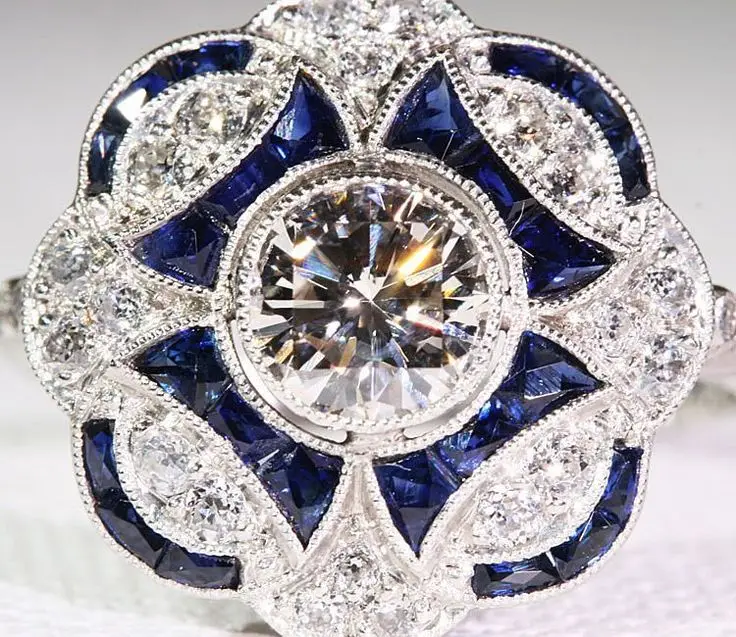
Textured gold like Florentine finishes, twisted rope, braided wire and mesh all were employed in jewellery design. Gold jewellery without gemstones was primarily daytime fashion, while diamond and other gemstone pieces were reserved for night. Popular stones included amethyst, coral and turquoise. Pearls and gemstones for daytime wear have also gained popularity. Animal jewellery like panthers, serpents and fish, was detailed. Like fish gained jeweled scales, birds exhibiting brightly gemmed feathers and jeweled eyes. During the 1960s, jewellery became even bigger and more colorful. Taste and sensibility changed drastically and, what a decade earlier would have been considered vulgar, was now the peak of fashion. Geometric shapes were reinterpreted. Long gold chains with stones were also popular. Silver, platinum, and yellow gold were used together with natural gemstone crystals, predominantly the use of cabochons that were incorporated with round brilliant cut diamonds and other gems.

